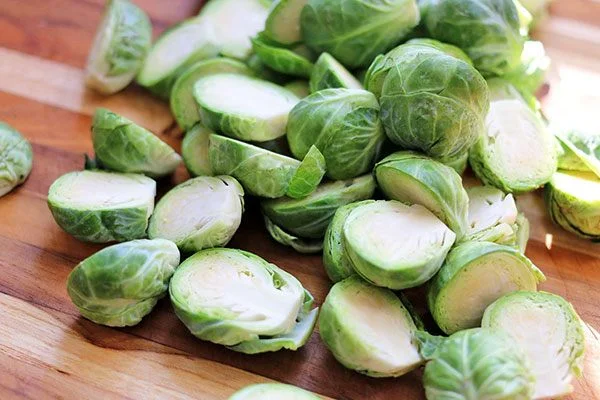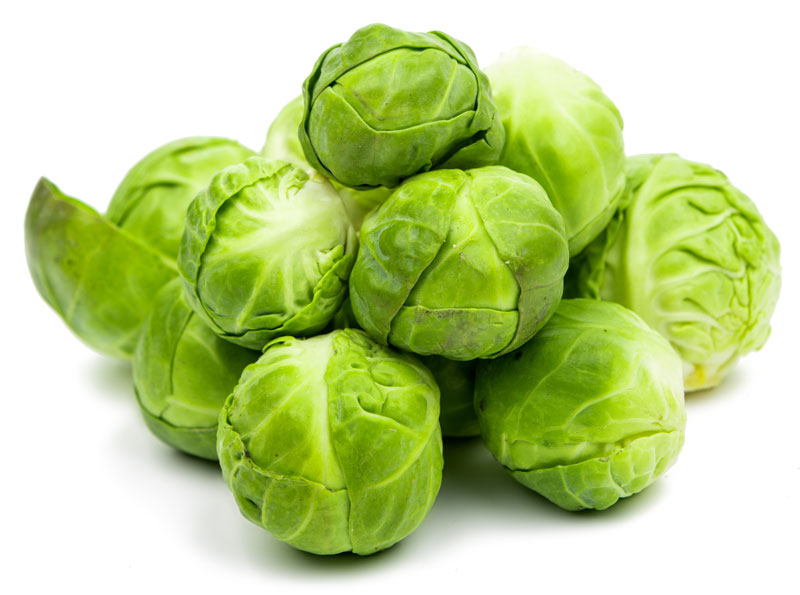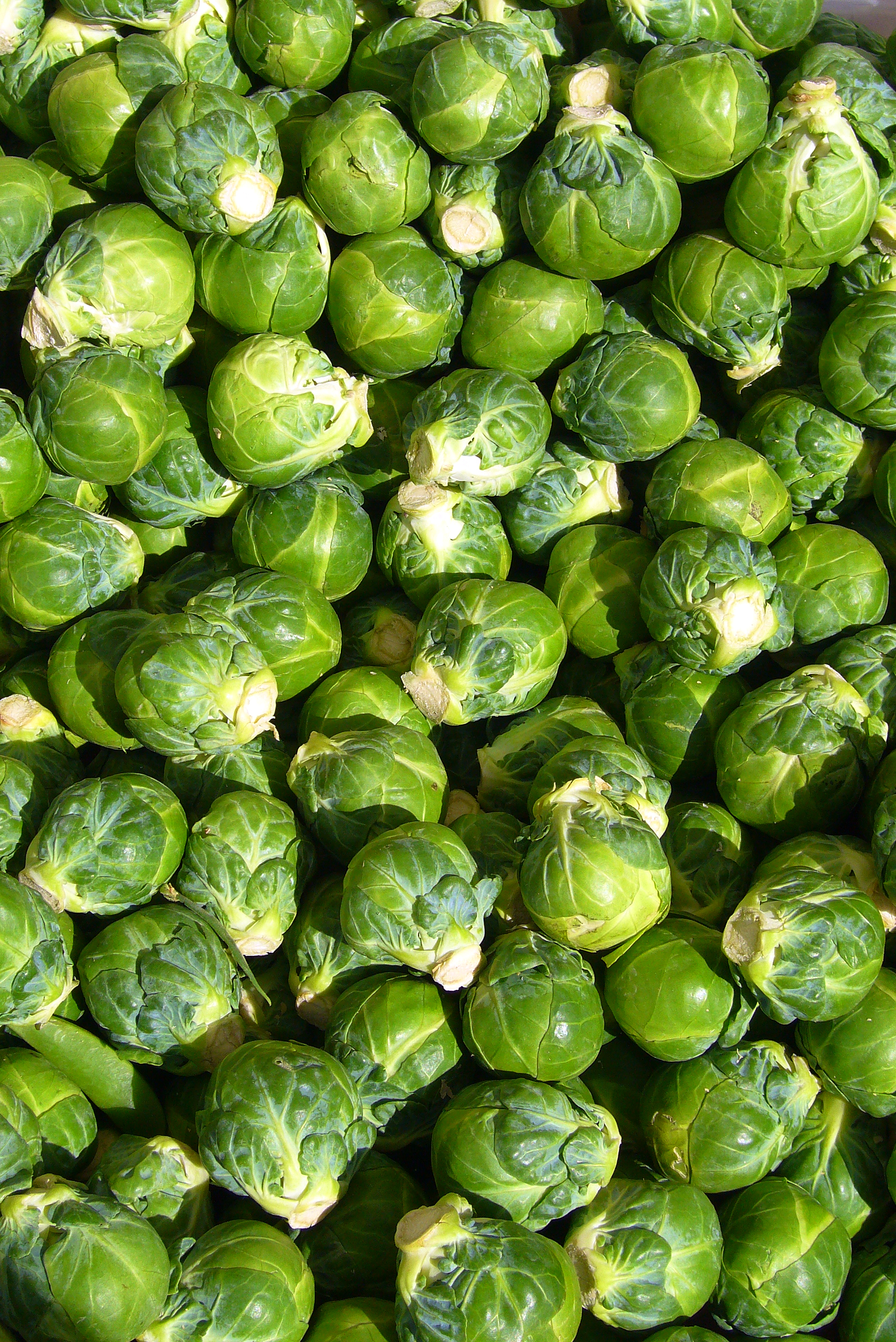Unique Qualities of Sprouts and Brussels Cabbage
Sprouts and Brussels cabbage are both members of the Brassica oleracea species, commonly known as cruciferous vegetables. Brussels sprouts are small, spherical vegetables composed of densely packed leaves, resembling miniature cabbages. On the other hand, cabbage typically grows as a large, compact head close to the ground. Understanding the differences between sprouts and Brussels cabbage is crucial for various reasons. Firstly, it allows for informed culinary decisions, as each vegetable has unique taste profiles and culinary applications. Secondly, recognizing their distinctions aids in dietary planning, considering variations in nutritional content. Lastly, appreciating their diverse cultivation methods contributes to sustainable agriculture practices and enhances agricultural knowledge.
Despite sharing a botanical lineage, sprouts and Brussels cabbage possess discernible disparities in appearance, taste, nutritional composition, and cultivation methods. Understanding these distinctions enriches culinary experiences, promotes healthier dietary choices, and fosters appreciation for agricultural diversity.
A. Common Species Brassica oleracea
Sprouts and Brussels cabbage share a common botanical lineage within the Brassica oleracea species, a diverse group of cruciferous vegetables renowned for their nutritional benefits and culinary versatility. Originating from coastal regions of southern and western Europe, Brassica oleracea has been cultivated for centuries, evolving into various cultivars through selective breeding efforts. This species serves as the foundation for a wide array of vegetables, including broccoli, cauliflower, kale, and kohlrabi, each exhibiting unique characteristics shaped by human intervention.

B. Historical Development through Selective Breeding
The historical evolution of sprouts and Brussels cabbage exemplifies the transformative power of human intervention in agricultural practices. Ancient civilizations, such as the Greeks and Romans, recognized the potential of wild cabbage plants and began cultivating them for consumption. Through meticulous selection of desirable traits, such as taste, texture, and appearance, early farmers gradually shaped the genetic diversity of Brassica oleracea, leading to the emergence of distinct cultivars.
The modern Brussels sprout is believed to have originated around the 13th century, with historical records suggesting its popularity in Belgium during the 16th century, particularly in the region surrounding Brussels. Selective breeding played a pivotal role in refining the characteristics of Brussels sprouts, emphasizing traits such as compactness, uniformity, and flavor. The cultivation of Brussels sprouts spread across Europe and eventually reached North America, where it became a staple vegetable in various cuisines.
C. Differences in Growth Patterns Brussels Sprouts vs. Cabbage Heads
Despite their shared botanical ancestry, sprouts and Brussels cabbage exhibit striking differences in their growth patterns, which significantly influence their appearance and harvesting techniques. Brussels sprouts develop along tall central stems, resembling miniature cabbages arranged in clusters. The sprouts emerge sequentially along the length of the stem, gradually increasing in size as they mature. This unique growth pattern distinguishes Brussels sprouts from other Brassica oleracea cultivars and contributes to their distinctive appearance in both field and garden settings.
In contrast, cabbage plants form large, compact heads close to the ground, characterized by tightly packed leaves that envelop the central core. The leaves of the cabbage plant exhibit remarkable plasticity, allowing them to fold inward and form the characteristic round or oval-shaped head. Cabbage heads vary in size and density depending on the cultivar and growing conditions, with some varieties producing larger heads suitable for long-term storage and others yielding smaller heads ideal for immediate consumption.
The divergent growth patterns of sprouts and Brussels cabbage heads reflect the complex interplay between genetic factors, environmental influences, and human manipulation. Understanding these distinctions enhances our appreciation for the rich diversity within the Brassica oleracea species and underscores the importance of sustainable agriculture practices in preserving heirloom varieties for future generations.
II. Appearance and Structure
A. Brussels Sprouts: Small, Spherical Shape, Densely Packed Leaves
Brussels sprouts, known for their diminutive size and compact shape, present a visually distinctive appearance characterized by small, spherical heads composed of densely packed leaves. Each sprout emerges along the length of a tall, sturdy central stem, resembling a miniature tree with its branches adorned by clusters of green orbs. The leaves of Brussels sprouts exhibit a tightly packed arrangement, with each leaf overlapping its neighbors to form a protective layer that shields the tender inner layers. This dense foliage contributes to the robust structure and resilience of Brussels sprouts, making them well-suited for prolonged storage and various cooking methods.
Furthermore, the spherical shape of Brussels sprouts lends itself to creative culinary presentations, serving as versatile ingredients in both savory dishes and decorative arrangements. Whether roasted whole, sautéed with complementary flavors, or showcased as vibrant additions to salads and side dishes, Brussels sprouts captivate the senses with their compact form and vibrant green hue. Despite their small size, Brussels sprouts offer a wealth of culinary possibilities, adding depth, texture, and visual appeal to a wide range of recipes.
B. Cabbage: Large, Single Head Close to the Ground
In contrast to the compact form of Brussels sprouts, cabbage plants produce large, leafy heads that grow close to the ground, anchored by a robust central core. Cabbage heads vary in size, shape, and color depending on the cultivar, with some varieties exhibiting round or oval shapes and others displaying elongated or conical forms. The leaves of the cabbage plant are broad, flat, and often crinkled or ruffled along the edges, contributing to the overall texture and appearance of the head. As the cabbage head matures, the outer leaves tightly envelop the inner layers, forming a protective shield that shields the tender heart from external elements.
The visual appeal of cabbage extends beyond its size and shape to encompass a spectrum of colors ranging from pale green to vibrant purple, offering a kaleidoscope of hues for culinary exploration. Whether showcased as the star ingredient in coleslaw, braised to perfection in hearty stews, or fermented into tangy sauerkraut, cabbage captivates the palate with its crisp texture, subtle sweetness, and versatile culinary applications. Moreover, the striking visual presence of cabbage heads adds a touch of elegance to any dining table, elevating both the aesthetic appeal and gastronomic experience of the meal.
C. Comparison of Visual Characteristics
When comparing the visual characteristics of sprouts and Brussels cabbage, several distinctions become apparent, reflecting their unique growth patterns and culinary potential. Brussels sprouts exhibit a compact, globular shape with densely packed leaves arranged in tight clusters along a central stem, evoking a sense of symmetry and order. In contrast, cabbage heads are larger and more expansive, with broad, flat leaves that converge to create a single cohesive unit close to the ground. While both vegetables share similarities in their leafy composition and green coloration, Brussels sprouts possess a more pronounced spherical form, whereas cabbage heads display a flatter, broader silhouette.

Additionally, the texture and arrangement of leaves further differentiate Brussels sprouts from cabbage, with Brussels sprouts showcasing a dense, intricate pattern of overlapping foliage and cabbage presenting a smoother, more uniform surface. These visual distinctions underscore the diverse culinary possibilities offered by sprouts and Brussels cabbage, inviting exploration and experimentation in the kitchen. Whether enjoyed as vibrant additions to salads, savory accompaniments to main courses, or flavorful components in vegetable medleys, sprouts and Brussels cabbage captivate the senses with their distinct appearance and structural complexity, enriching the culinary landscape with their unique contributions to gastronomy.
III. Taste and Texture
A. Brussels Sprouts: Denser Texture, Bitter Taste
Brussels sprouts are characterized by their dense texture and slightly bitter flavor, which sets them apart from other members of the Brassica oleracea family. The compact structure of Brussels sprouts contributes to their firm, substantial texture, making them ideal for roasting, sautéing, or braising to achieve a tender yet resilient consistency. However, the bitterness of Brussels sprouts can be off-putting to some palates, requiring careful cooking techniques and flavor pairings to mitigate its intensity. Despite their assertive taste profile, Brussels sprouts offer a depth of flavor that complements a variety of ingredients, ranging from savory meats to tangy sauces, enhancing the overall complexity of a dish.
B. Cabbage: Milder Flavor, Often Used Raw in Salads
Unlike Brussels sprouts, cabbage boasts a milder flavor profile characterized by subtle sweetness and crisp texture, making it a versatile ingredient in both raw and cooked preparations. Cabbage’s tender leaves lend themselves well to salads, slaws, and sandwiches, providing a refreshing crunch and delicate flavor that pairs harmoniously with a range of dressings and seasonings. When cooked, cabbage retains its mild sweetness while developing a soft, buttery texture that enhances the richness of soups, stews, and stir-fries. Whether enjoyed raw or cooked, cabbage offers a delightful balance of flavors and textures that appeal to a wide range of tastes and preferences.
C. Culinary Applications Based on Taste Differences
The distinct taste and texture profiles of sprouts and Brussels cabbage inform their culinary applications, guiding chefs and home cooks in the creation of diverse and flavorful dishes. Brussels sprouts, with their denser texture and bitter undertones, excel in roasted vegetable medleys, hearty gratins, and savory side dishes that benefit from their robust flavor and substantial bite. Additionally, Brussels sprouts pair beautifully with rich, savory ingredients such as bacon, Parmesan cheese, and balsamic vinegar, which help to offset their bitterness and enhance their natural sweetness.
In contrast, cabbage’s mild flavor and crisp texture make it a versatile ingredient in a wide range of culinary contexts. Raw cabbage adds a refreshing crunch to salads, wraps, and tacos, serving as a vibrant backdrop for bold dressings and zesty toppings. When cooked, cabbage lends its delicate sweetness and tender texture to soups, stir-fries, and braises, infusing dishes with subtle complexity and depth of flavor. Furthermore, cabbage’s versatility extends to fermented preparations such as sauerkraut and kimchi, where its natural sugars undergo a transformative fermentation process, yielding tangy, probiotic-rich condiments that enhance the flavor and digestibility of a meal.
Overall, the contrasting taste and texture profiles of sprouts and Brussels cabbage offer endless culinary possibilities, inspiring creativity and innovation in the kitchen. By understanding and harnessing the unique qualities of these versatile vegetables, cooks can elevate their dishes with vibrant flavors, satisfying textures, and nutritious ingredients that delight the senses and nourish the body.
IV. Nutritional Content
A. Brussels Sprouts: Higher in Vitamins A and C, Folic Acid, Potassium, Magnesium, and Phosphorus
Brussels sprouts are nutrient powerhouses, packed with essential vitamins and minerals that contribute to overall health and well-being. These miniature cabbages are particularly rich in vitamins A and C, two potent antioxidants that support immune function, promote healthy skin, and protect against cellular damage caused by free radicals. Additionally, Brussels sprouts are a good source of folic acid, a B vitamin essential for DNA synthesis and cell division, making them especially beneficial for pregnant women and individuals with increased folate needs. Furthermore, Brussels sprouts contain significant amounts of potassium, magnesium, and phosphorus, minerals that play key roles in maintaining electrolyte balance, supporting bone health, and regulating muscle function. Incorporating Brussels sprouts into your diet can help boost nutrient intake and promote overall health and vitality.
B. Cabbage: Lower in Calories, Higher in Calcium and Sugar
While cabbage may be lower in calories compared to Brussels sprouts, it offers its own array of nutritional benefits that make it a valuable addition to any diet. Cabbage is rich in dietary fiber, which aids in digestion, promotes satiety, and supports digestive health. Additionally, cabbage is a good source of calcium, a mineral essential for bone strength and density, as well as other trace minerals such as manganese and magnesium. However, it’s important to note that cabbage contains higher levels of sugar compared to Brussels sprouts, which can affect blood sugar levels and may need to be considered by individuals with diabetes or those following a low-sugar diet. Despite its modest calorie content, cabbage provides a wealth of vitamins, minerals, and antioxidants that contribute to overall health and well-being.
C. Implications for Dietary Choices and Health Benefits
The contrasting nutritional profiles of sprouts and Brussels cabbage offer individuals a variety of dietary options to suit their health goals and preferences. For those seeking to boost their vitamin and mineral intake, Brussels sprouts serve as an excellent source of essential nutrients, including vitamins A and C, folic acid, and potassium. Incorporating Brussels sprouts into meals can help support immune function, promote bone health, and provide antioxidant protection against chronic diseases such as cancer and heart disease.
On the other hand, cabbage offers a low-calorie, nutrient-dense option for individuals looking to increase their fiber and calcium intake while managing their calorie consumption. Whether enjoyed raw in salads, sautéed in stir-fries, or braised in hearty soups, cabbage provides a versatile and flavorful addition to a balanced diet. By incorporating both sprouts and Brussels cabbage into their meals, individuals can enjoy a diverse range of flavors, textures, and nutritional benefits that contribute to overall health and vitality.
V. Culinary Uses and Recipes
A. Cooking Methods: Boiling, Steaming, Roasting, etc.
Both sprouts and Brussels cabbage lend themselves to a variety of cooking methods, allowing for versatility in culinary preparations. Brussels sprouts can be boiled, steamed, roasted, sautéed, or grilled to achieve different textures and flavors. Boiling or steaming Brussels sprouts helps to soften their dense texture while preserving their vibrant color and nutritional content. Roasting Brussels sprouts at high heat caramelizes their outer leaves, enhancing their natural sweetness and creating a crispy exterior. Sautéing Brussels sprouts in olive oil or butter imparts rich flavor and tenderizes the sprouts, making them a delicious addition to pasta dishes, stir-fries, or side dishes.
Similarly, cabbage can be cooked using various methods, including boiling, steaming, braising, or stir-frying. Boiled or steamed cabbage retains its crisp texture and delicate flavor, making it an excellent addition to soups, stews, and salads. Braising cabbage in broth or wine infuses it with savory depth and tenderness, while stir-frying cabbage with aromatic spices and vegetables creates a flavorful and satisfying side dish or main course. Additionally, cabbage can be fermented to produce tangy sauerkraut or kimchi, which adds a probiotic-rich condiment to sandwiches, salads, or rice bowls.

B. Substitutability in Recipes
Sprouts and Brussels cabbage are often interchangeable in recipes, depending on personal preference and availability. While Brussels sprouts offer a denser texture and slightly bitter flavor, cabbage provides a milder taste and crispier texture, allowing for seamless substitution in various dishes. For example, Brussels sprouts can be used in place of cabbage in coleslaw or stir-fries to add a distinct flavor and texture, while cabbage can be substituted for Brussels sprouts in roasted vegetable medleys or gratins to provide a lighter, sweeter taste. Experimenting with different combinations and proportions allows for creative culinary exploration and customization to suit individual tastes and dietary preferences.
C. Sample Recipes Showcasing the Versatility of sprouts and Brussels cabbage
Roasted Brussels Sprouts with Balsamic Glaze
Toss Brussels sprouts with olive oil, salt, and pepper, then roast in the oven until golden brown and crispy.
Drizzle with a balsamic glaze made from balsamic vinegar and honey, then garnish with chopped parsley or toasted nuts for added flavor and texture.
Cabbage and Apple Slaw
Shred cabbage and apples, then toss with a tangy dressing made from Greek yogurt, apple cider vinegar, and Dijon mustard.
Add chopped walnuts or raisins for crunch and sweetness, then chill in the refrigerator before serving as a refreshing side dish or topping for sandwiches and tacos.
Stir-Fried Brussels Sprouts with Garlic and Soy Sauce
Slice Brussels sprouts thinly, then stir-fry with minced garlic, ginger, and soy sauce until tender-crisp.
Garnish with sliced green onions and sesame seeds, then serve hot as a flavorful and nutritious side dish or vegetarian main course.
Stuffed Cabbage Rolls
Blanch cabbage leaves, then fill with a mixture of cooked rice, ground meat or lentils, onions, and herbs.
Roll up the cabbage leaves, place in a baking dish, then top with tomato sauce and bake until heated through and bubbly. Serve hot with crusty bread for a comforting and satisfying meal.
These sample recipes highlight the versatility of sprouts and Brussels cabbage, showcasing their ability to shine in a variety of culinary contexts, from simple side dishes to hearty main courses. By experimenting with different cooking methods and flavor combinations, individuals can discover new ways to enjoy these nutritious and delicious vegetables in their daily meals.
Sprouts and Brussels cabbage offer distinct differences in appearance, taste, texture, and culinary versatility. While Brussels sprouts are small, dense, and slightly bitter, cabbage is larger, crisp, and milder in flavor. Understanding these unique qualities enhances culinary creativity and encourages healthier eating habits. Embracing diversity in ingredients leads to more enjoyable and satisfying meals while also promoting environmental sustainability. Preserving heirloom varieties and promoting biodiversity in agriculture are crucial for future food security and ecological balance.
| Brussels Sprouts | Cabbage | |
|---|---|---|
| Appearance | Small, spherical | Large, single head |
| Texture | Dense | Crisp |
| Taste | Slightly bitter | Mild |
| Nutrients | High in vitamins A and C, folic acid, potassium, magnesium, and phosphorus | Lower in calories, higher in calcium and sugar |
| Culinary Uses | Boiling, steaming, roasting, sautéing, grilling | Boiling, steaming, braising, stir-frying |
| Substitutability | Can be substituted for cabbage in many recipes | Can be substituted for Brussels sprouts in certain dishes |
Sour Cabbage A Culinary Journey of Flavor, and Health
Delicious Czech Sweet and Sour Cabbage Recipe
Cabbage for Pregnancy A Nutritional Powerhouse
Traditional Recipes Indian Cabbage, Cultural Significance, and Modern Innovations
Tantalizing Taste Flavorful World of Fried African Cabbage
Broccoli Cabbage Recipe A Delicious for Any Occasion
Exploring German Sweet and Sour Cabbage
